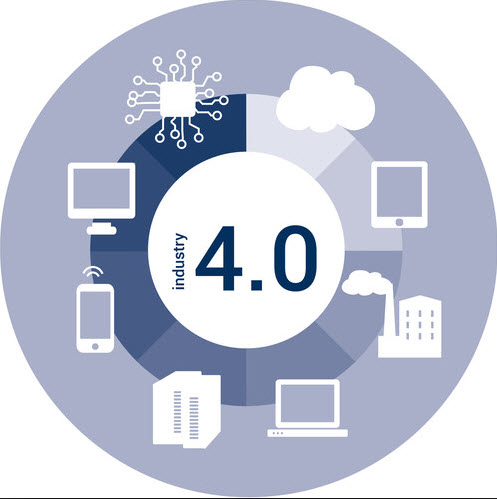Trends To Watch in 2016

Anyone who has watched the news lately knows that the U.S. economy is still struggling. In December, America’s manufacturing industry’s key index, the ISM, hit 48.2% marking the lowest level since 2009. So what does this mean for manufacturing in 2016? While manufacturing is only predicted to grow modestly in the upcoming year, there are a few exciting trends to watch for that will help booster the industry out of contraction.
Do any of the terms Manufacturing/Industry 4.0, Industrial Internet of Things (IIoT) or the Digital Factory sound familiar? Some people use these terms interchangeably, while others are adamant that these terms speak to very different concepts. Regardless of the answer, it is clear that in today’s struggling economy and mounting competition companies need to be smarter, faster and more innovative to stay or get ahead.
“The concept of the smart factory, which is at the heart of Industry 4.0, aims to have everything imaginable connected to a network that is capable of storing, transferring, analyzing and acting upon information gleaned from a network of connected machines, control systems and sensors,” according to Neil Tyler from NewElectronics.co.uk. This is the year that the theories of Industry 4.0 become a reality, significantly improving manufacturing productivity, efficiency, quality and flexibility.
The Industrial Internet of Things (IIoT) refers to the digital technologies that are being embedded into all types of devices from tools and products to wearable items that delivery connectivity, data-driven services, advanced analytics and big data. In other words, companies will be putting chips and software into just about everything. This intense “smart” information gathering will help push manufacturers to apply these technologies to their own operations and in turn will reshape their organizations to be more digital, collaborative and smart.
Among other advanced technologies that will push boundaries in 2016 are collaborative robots, 3D printing and robotics, and cybersecurity including cloud-based software systems and a shift from the open to the closed cloud for data storage in factories. These new technologies will challenge traditional production models and promise to bring massive leaps in productivity.
*For more information about the sources used to create this article, please contact marketing@muellergroup.net.